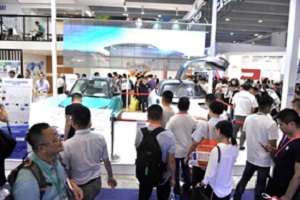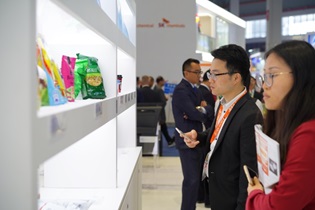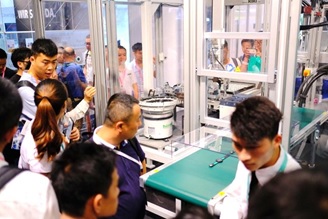
A US$1-trillion loss from the pandemic, estimated by the United Nations Conference on Trade and Development (UNCTAD), is an expensive lesson to learn for global economies while recovery anticipated remaining lethargic in 2021. The ASEAN region, seeing an economy fell for the first time in 22 years, has had to contend with the impacts of the pandemic since its prologue in March 2020. Despite the uncertain aftermath, the recovery is at the arm’s length. In particular, for the ASEAN-5, is expecting a GDP growth of 5.2% in 2021, according to the International Monetary Fund (IMF) audit of January 2021.
China, known as the world’s factory, is estimated to garner a 2.3% growth year-over-year in 2020; and projected to reach 8.1% in 2021, according to the International Monetary Fund's (IMF) updated January 2021 economic outlook. The country rebounded more rapidly and re-opened gradually as early as April 2020. China is ASEAN’s largest trading partner since 2009; and its fourth-largest external source of foreign investments (FDIs) in 2019, accounting for 5.7% of the region’s total FDIs.
Collaborations to future-proof regional expansion
Starting in 2021, partnerships among the ASEAN countries, China, and other trading nations are expected to accelerate recovery in the region. Over time, growth will be driven by the digital transformation, the Fourth Industrial Revolution (4IR), and connectivity cooperation - all of which are underscored in different initiatives, namely, the ASEAN’s 2025 connectivity master plan (MPAC), the ASEAN-China Strategic Partnership Vision 2030, the Belt and Road Initiative (BRI), and the China-led Regional Comprehensive Economic Partnership (RCEP), to cite a few.
The China +1 strategy is also a promising route for the ASEAN-5 to foster more investments. Companies that adopt the China +1 with the ASEAN-5 countries can enjoy the dual benefits of doing business with China and the ASEAN-5.
The ASEAN-5’s participation in regional and international free trade agreements also allows investors to access global supply chains. Likewise, the region’s strategic geographical location meets the logistical needs of companies and offers the advantage of reducing production costs.
Meanwhile, for China’s BRI, the ASEAN is vital to its Maritime Silk Road, which will connect China to other trading economies in Southeast Asia, South Asia, the EMEA (Europe, Middle East and Africa), and the European regions. ASEAN’s participation in the BRI has witnessed a surge in infrastructure developments which facilitates trade and investments for the ASEAN countries, thereby improving their competence in the global market.
Restoring growth momentum in the medical devices sector
While country lockdowns have caused several industries to push pause buttons, the medical technology sector has grown exponentially as demand for personal protective equipment (PPE), respirators, fans, test kits and other essential medical devices has increased and surpassed supply. Southeast Asia has benefited from its production capacity for PPE and medical devices. Digital healthcare readiness is another advantage. The emerging upper-income economies of countries like Thailand and Malaysia, for example, are both aiming to become the medical hubs of Asia.
In Thailand, medical devices are considered a high value sector. For this reason, the country has laid down the groundwork with enabling policies like tax incentives allowed by the country’s Board of Industry (BOI) for investment projects and the machines that they require, and on raw materials used in making exported products, and other duty exemptions. As well, the 10-year strategic plan spanning from 2016 to 2025 will cover four major areas – wellness, medical, academics, and products. This roadmap paves the way for developing a medical industry that is innovative and focused on research and development.

Meanwhile, Thailand 4.0 is an economic model that uses the Industry 4.0 concept to drive Thailand's transition from a medium-income to a high-income country status. Digitalisation is central to Thailand's Industry 4.0 business model and augurs well for the medical device sector. Healthcare applications, telemedicine, assisted robotics, and cloud technologies could be given a boost under Thailand 4.0. Thailand is a bastion of manufacturing for single-use and durable, high-technology medical devices and appliances ranging from magnetic resonance imaging (MRI) and X-ray machines, surgical implants, and diagnostic tools to first aid kits, dental equipment, hospital beds, and others. The majority of its locally manufactured plastic and rubber medical devices are exported. According to Krungsri Research, 70% of the sector’s total sales come from exports and 30% from domestic sales.
Malaysia, another hotbed for the medical devices sector, boasts a strong distribution network via its 13 free industrial zones and other logistics channels. It also offers diverse medical technology ranging from surgical gloves, wound care, and other single-use devices to cardiac pacemakers, stents, orthopedic and imaging equipment. To date, Malaysia has over 200 medical device manufacturers; and more than 30 multinational corporations (MNCs) producing high value-added medical devices. Over and above, Malaysia is the world’s largest nitrile and latex rubber gloves producer, accounting for more than 60% of global supply. Domestic rubber glove makers and other emerging players have witnessed a growing demand for gloves during the Covid-19 pandemic and reaped the benefits from the growing global glove sector. Kenanga Research projects a 30% growth in Malaysia’s nitrile glove market share in 2020. In response to the growing demand, large glove manufacturers have expanded with additional production lines and land for new factories. Meanwhile, demand for medical gloves is projected to rise by 15-20% in 2021, according to the Malaysian Rubber Gloves Manufacturers Association (MARGMA).
Race to zero-emissions in the growing EV markets
In the ASEAN, the growing momentum to reduce carbon emissions in the environment is setting the stage for the 650 million consumers in the region to switch to green technologies.
Asia represented 16% of the world's total transportation emissions in 2006. By 2030, its share of vehicle-related carbon emissions is expected to rise to 31%. For this reason, the adoption of electric vehicles (EVs), including hybrid electric vehicles (HEVs), touted to generate zero emissions, is being promoted to reduce the carbon impact of the transport sector.

In Southeast Asia, the manufacture of EVs is gaining traction. Indonesia, the second largest car producer in the region after Thailand, plans to begin producing EVs in 2022. By 2025, EVs and HEVs will make up 20% of total vehicle production in Indonesia, with the country having good prospects of becoming a regional EV manufacturing centre by 2030. Thailand, the biggest car manufacturer in Southeast Asia, is also expanding its EV industry. The Thailand government has established the National Electric Vehicle Policy Committee (NEVPC) that oversees the national EV roadmap targeting to produce 1.2 million EVs by 2035. The country’s BOI has also offered tax incentives for EV/HEV projects such as tax holidays for manufacturers and businesses in the EV supply chain, including producers of battery modules and cells.
Vietnam is also making inroads in its EV production with the launch of three locally produced smart battery-electric SUVs in January 2021, which are expected to debut in the US market in 2022. The country, which posted a 7% drop in total vehicle sales in 2020 against the previous year's sales, is charging ahead in its EV production plan - in a bid to mitigate its rising pollution levels.
Packaging demands for sustainability: a constant feature
The rising opportunity in the food delivery sector and home delivery of consumer goods has presented growth opportunities for the packaging sector. A Transparency Market Research report on the ASEAN packaging industry noted a high demand in the flexible packaging market in Indonesia, particularly in the bags, pouches and films segments. Meanwhile, the current increase in online shopping and home delivery activities has not only led to a demand for packaging but has also changed consumer preferences for packaging.
A Euromonitor report examined the impact of Covid-19 on the Malaysian packaging industries and concluded that revenues were hit by the decline in consumer spending. In Malaysia, containment measures limited economic activities leading to below-normal purchases of packaged retail goods. On another note, consumer preferences may change in post-pandemic years. For instance, labelling and convenient packaging formats, or packaging with closures or an easy-to-open design for consumption on the go, were some of the important features favoured by consumers, according to Euromonitor.

In the Philippines, the packaging market is projected to grow 3.3% to 69 billion units annually by 2024, according to GlobalData. The growth is mainly driven by the rigid packaging segment, estimated to present a CAGR of 6.4% between 2019 and 2024. Boosting demand for rigid packaging is the popularity of packaged and processed foods and soft drinks portable containers.
In Vietnam, online shopping and home delivery during the Covid-19 lockdown have promoted the preference for larger packs and multipacks to prioritize safety. GlobalData forecasted Vietnam’s e-commerce activity had surged by 30.3% to US$13.1 billion during 2020. Relatedly, Vietnam is due to ban single-use plastics from convenience stores and supermarkets by 2021. This move, along with the ban on imported scraps by 2025, is aimed at increasing recycling rates of municipal waste to 90%.
As a result, the industry is seeking continued development of recyclable materials and sustainable technologies that can enable manufacturers to use fewer plastics without compromising the quality of the packaged product.
Recovery strategies: scouting for new markets in post-pandemic era
The pandemic has been a crucial test of Southeast Asia's advantage as a sustainable market and regional supply chain. The ASEAN’s diverse markets and industry specialization offer growth opportunities for companies seeking to regain momentum in a disrupted global economy. With all its infrastructure advantages and lower cost structures, ASEAN is expected to emerge stronger post-pandemic, to become a more secure place for investment and manufacturing.
To grasp the opportunities generated during this recovery period, ASEAN visitors from manufacturing sectors prospecting new avenues for business growth and market expansion are invited to attend the upcoming CHINAPLAS 2021, to be held during April 13-16 at Shenzhen World Exhibition & Convention Centre (Bao'an New Venue), where they can explore new materials and automated technology presented by 3,600+ exhibitors.

CHINAPLAS+: beyond a physical exhibition
CHINAPLAS will not only showcase technological innovations on the fairground, but will also go beyond a physical exhibition to the online world! “CHINAPLAS+” is the brand leading us to an integrated online and offline services, not limited to the 4-day show period, but throughout the year. One of the flagship services is “Live Streaming”, bringing exhibitor interviews, exhibits close-up, guided tours, on-site events, etc., collectively to the official online video channel for buyers all over the world. “Live Streaming” could be the handiest alternative for buyers who cannot visit the show due to the epidemic. Look forward to seeing you on the fairground or online. For more information, visit: www.chinaplasonline.com














